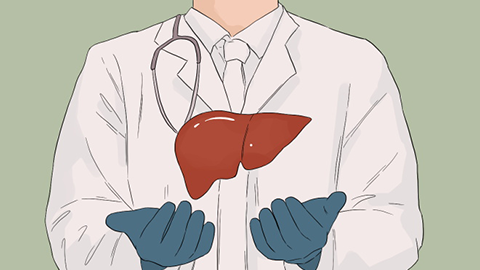How is a liver hemangioma treated?
In general, liver hemangiomas may be caused by congenital vascular malformations, changes in female hormone levels, enlargement of the hemangioma compressing surrounding tissues, secondary infection of the hemangioma, or hemorrhage associated with the hemangioma. It is recommended to seek medical attention promptly, identify the underlying cause, and then improve the condition under a doctor's guidance through regular monitoring, medication, or surgical treatment. Specific analyses are as follows:

1. Congenital vascular malformation: Abnormal development of liver blood vessels during embryonic stages can lead to abnormal vascular proliferation and formation of hemangiomas, which are mostly benign. If the hemangioma is small and asymptomatic, no specific treatment is required; instead, ultrasound examinations every 6–12 months can monitor changes in tumor size.
2. Changes in female hormone levels: Elevated estrogen and progesterone levels during pregnancy or due to contraceptive use may stimulate hemangioma growth. Close monitoring of the hemangioma is necessary during pregnancy, and hormonal medications should be avoided.
3. Hemangioma enlargement causing compression of surrounding tissues: As the hemangioma grows, it may compress nearby organs or tissues in the liver, leading to symptoms such as abdominal pain and bloating. Patients may follow medical advice to take medications such as propranolol tablets, prednisolone tablets, or raloxifene hydrochloride tablets to suppress hemangioma growth.
4. Secondary infection of hemangioma: Bacterial infection may occur after hemangioma rupture or following a biopsy procedure, resulting in fever and liver area pain. Patients should follow medical instructions to use antibiotics such as ceftriaxone sodium injection, levofloxacin injection, or metronidazole injection to control the infection.
5. Hemangioma with hemorrhage: Trauma or sudden increases in blood pressure may cause the hemangioma to rupture and bleed, leading to severe abdominal pain, shock, and other emergency symptoms. Immediate medical care is required. Transcatheter hepatic arterial embolization may be performed to block the blood supply to the hemangioma and stop bleeding. In severe cases, partial hepatectomy may be necessary to remove the affected portion of the liver and control bleeding.
Daily management includes maintaining a regular sleep schedule and avoiding late nights to reduce liver strain; eating a light diet and abstaining from alcohol to prevent liver damage; maintaining emotional stability to avoid drastic blood pressure fluctuations; and undergoing regular liver function tests to promote liver health and reduce the risk of hemangioma-related complications.






